What'sNEW Archives, October-December 2005
 5 January 2006 5 January 2006
"Evolution in Action" was the number one "Breakthrough of the Year" according to the 2005 year-end issue of Science. Two veteran reporters write in the cover story, Concrete genome data allowed researchers to start pinning down the molecular modifications that drive evolutionary change in organisms from viruses to primates. With our own questions in mind we have read the story carefully. Its main points —
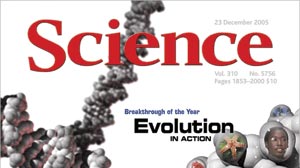
 By September, the chimp genome had been mostly sequenced. Compared to the human genome, The average protein differs by less than two amino acids. But a surprisingly large chunk of noncoding material is either inserted or deleted.... By September, the chimp genome had been mostly sequenced. Compared to the human genome, The average protein differs by less than two amino acids. But a surprisingly large chunk of noncoding material is either inserted or deleted....
 Several studies showed that a species may split into two and begin to vary more easily than previously thought. Several studies showed that a species may split into two and begin to vary more easily than previously thought.
 Adaptation at the genetic level is exemplified by stickleback fish that have lost their armor plates several times by the same mechanism. [The only example.] Adaptation at the genetic level is exemplified by stickleback fish that have lost their armor plates several times by the same mechanism. [The only example.]
 In fruitflies, noncoding DNA that evolves more slowly than genes exemplifies positive [not purifying?] selection. This DNA can regulate genes to produce phenotypic effects like spots. In fruitflies, noncoding DNA that evolves more slowly than genes exemplifies positive [not purifying?] selection. This DNA can regulate genes to produce phenotypic effects like spots.
 The new research can help find ways to treat genetically related human diseases and rapidly evolving viruses. The new research can help find ways to treat genetically related human diseases and rapidly evolving viruses.
 The deadly flu virus of 1918, recovered from a victim frozen in Alaskan permafrost, was formerly confined to birds. A handful of mutations had enabled it to easily infect human hosts. A second study observed that the same virus can switch its dependence from a host-provided enzyme to one of its own, which would help explain its extreme virulence.
Editor-in-Chief Donald Kennedy writes that the year's developments in evolutionary science answer several questions, including, What can the new science of comparative genomics tell us about change over time? The answer is a lot, apparently, about the conservation of sequences, speciation, adaptation within narrow ranges, mutations that cause loss-of-function or change-of-host, the effects of regulatory sequences, adaptation by program-switching, and the frequency at which species lose or acquire longish strands of DNA. The deadly flu virus of 1918, recovered from a victim frozen in Alaskan permafrost, was formerly confined to birds. A handful of mutations had enabled it to easily infect human hosts. A second study observed that the same virus can switch its dependence from a host-provided enzyme to one of its own, which would help explain its extreme virulence.
Editor-in-Chief Donald Kennedy writes that the year's developments in evolutionary science answer several questions, including, What can the new science of comparative genomics tell us about change over time? The answer is a lot, apparently, about the conservation of sequences, speciation, adaptation within narrow ranges, mutations that cause loss-of-function or change-of-host, the effects of regulatory sequences, adaptation by program-switching, and the frequency at which species lose or acquire longish strands of DNA.But the new studies say nothing, in our reading, about how new genetic programs for new features are originally composed in a genetically closed system, as must somehow happen in standard darwinian theory. The closest approach to this question by anyone in this magazine issue comes from Kennedy: Genes that are now known to exert complex effects on body form at the macro level answer the commonly stated objection that complex structures could not have evolved from simpler precursors. If this not-so-new suggestion really meets that objection, someone should be able to demonstrate the process, at least in a computer model. Until then, it's one more "Just So" story. Meanwhile, evidence that new genetic programs are acquired is accumulating steadily. The acquisition of new programs in a genetically open system is the basis for the scientific amendment to darwinism that we propose. We think it deserves consideration.
 Elizabeth Culotta and Elizabeth Pennisi, "Evolution in Action" [summary], 10.1126/science.310.5756.1878, p 1878-1879 v 301, Science, 23 Dec 2005. Elizabeth Culotta and Elizabeth Pennisi, "Evolution in Action" [summary], 10.1126/science.310.5756.1878, p 1878-1879 v 301, Science, 23 Dec 2005.
 Donald Kennedy, "Editorial: Breakthrough of the Year" [summary], 10.1126/science.1123757, p 1869 v 301, Science, 23 Dec 2005. Donald Kennedy, "Editorial: Breakthrough of the Year" [summary], 10.1126/science.1123757, p 1869 v 301, Science, 23 Dec 2005.
 Special Online Collection: Breakthrough of the Year 2005, Science Special Collections, 23 Dec 2005. Special Online Collection: Breakthrough of the Year 2005, Science Special Collections, 23 Dec 2005.
 The chimp genome has been sequenced. At least seventeen human genes contain exons missing in chimps — What'sNEW, 30 Sep 2005. The chimp genome has been sequenced. At least seventeen human genes contain exons missing in chimps — What'sNEW, 30 Sep 2005.
 NeoDarwinism... is a related CA webpage. NeoDarwinism... is a related CA webpage.
 ...Is Evolutionary Progress in a Closed System Possible? is a related CA webpage. ...Is Evolutionary Progress in a Closed System Possible? is a related CA webpage.
 Viruses and Other Gene Transfer Mechanisms has a What'sNEW section listing over a hundred examples of genetic programs acquired by gene transfer. [Next-What'sNEW about HGT-Prev] Viruses and Other Gene Transfer Mechanisms has a What'sNEW section listing over a hundred examples of genetic programs acquired by gene transfer. [Next-What'sNEW about HGT-Prev]
 24 December 2005 24 December 2005
A dust storm caused the red rain of Kerala, according to scientists at the Vikram Sarabai Space Centre in Thiruvananthapuram, India.
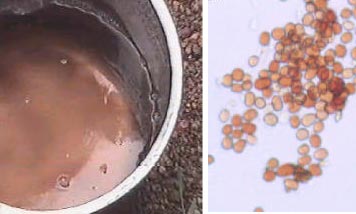
Red rainwater, and spores found in it (magnified) |
For background, on the morning of 25 July 2001, about three hours after an unexplained sonic boom, red rain began to fall along the west coast of southern India. Two scientists from Mahatma Gandhi University wondered if cometary panspermia might account for the coincidental events. They found red spores in rainwater samples throughout the region.But two years later, analysing data from satellites and laser radar, the VSSC group claimed they "found that the culprit was a dust cloud that originated in the gulf countries."
 Mystery of Kerala's 'red rain' unraveled, IndiaExpress.com, 19 Jun 2003. Mystery of Kerala's 'red rain' unraveled, IndiaExpress.com, 19 Jun 2003.
 The red rain of Kerala — our initial What'sNEW article about the investigation, 23 Oct 2003. The red rain of Kerala — our initial What'sNEW article about the investigation, 23 Oct 2003.
 A dust storm couldn't have caused the red rain of Kerala... — What'sNEW, 6 Jan 2006. A dust storm couldn't have caused the red rain of Kerala... — What'sNEW, 6 Jan 2006.
 24 December 2005 24 December 2005

The Cosmic Ancestry website is reviewed by The Society for Scientific Exploration.
 Charles Eisenstein, "Website Review: www.panspermia.org," p 655-657 v 19 n 4, Journal of Scientific Exploration, Winter 2005. Charles Eisenstein, "Website Review: www.panspermia.org," p 655-657 v 19 n 4, Journal of Scientific Exploration, Winter 2005.
 Eisenstein's Website Review is reproduced in "Replies," posted 24 Dec 2005. Eisenstein's Website Review is reproduced in "Replies," posted 24 Dec 2005.
 22 December 2005 22 December 2005
Building blocks of life orbiting a Sun-like star were observed by astronomers using NASA's Spitzer Space Telescope. The star, IRS 46, is about 375 light years from Earth. The two organic compounds found, acetylene and hydrogen cyanide, are common in our solar system, but this is the first evidence of them within the inner regions of a planet-forming disk. (We think these compounds could be postbiotic.)
The spectrographic data showed that the gases ...must be orbiting close to the star, approximately in its 'habitable zone', the region where Earth orbits the Sun and where water is just at the borderline between liquid and gaseous states. The report will soon appear in the Astrophysical Journal Letters.
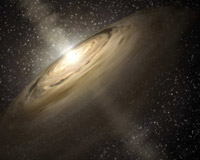
 Precursor to Proteins and DNA Found in Stellar Disk, W. M. Keck Observatory, 20 Dec 2005. Precursor to Proteins and DNA Found in Stellar Disk, W. M. Keck Observatory, 20 Dec 2005.
 Life's ingredients circle Sun-like star, by David L Chandler, NewScientist.com, 22 Dec 2005. Life's ingredients circle Sun-like star, by David L Chandler, NewScientist.com, 22 Dec 2005.
 Building blocks of life found in planet-forming disk, Space.com, 20 Dec 2005. Building blocks of life found in planet-forming disk, Space.com, 20 Dec 2005.
 Hot organic chemistry in the inner part of protoplanetary disks, by Fred Lahuis et al., IAU Symposium 231, 28 Aug - 2 Sep 2005. Hot organic chemistry in the inner part of protoplanetary disks, by Fred Lahuis et al., IAU Symposium 231, 28 Aug - 2 Sep 2005.
 Milky Way Harboring the Chemistry of Life, Astrobiology Magazine, 27 Dec 2005. Milky Way Harboring the Chemistry of Life, Astrobiology Magazine, 27 Dec 2005.
 Comets... is a related CA webpage. Comets... is a related CA webpage.
 ...Interstellar Dust is a related CA webpage. ...Interstellar Dust is a related CA webpage.
 Thanks, Jerry Chancellor, Larry Klaes and Whitney Clavin. Thanks, Jerry Chancellor, Larry Klaes and Whitney Clavin.
 21 December 2005 21 December 2005
US District Court rules: ID is not science. Point number one of Judge John E. Jones III's opinion is headed, An Objective Observer Would Know that ID and Teaching About 'Gaps' and 'Problems' in Evolutionary Theory are Creationist, Religious Strategies that Evolved from Earlier Forms of Creationism. We wish that the two concepts, (1) creationism / ID, and (2) problems in evolutionary theory, could be disconnected in public thought. But neither side in this dispute wants them disconnected, and anyway, a federal lawsuit is not the proper venue for advancing science. Unfortunately, if a major scientific paradigm like darwinian evolution may need fundamental reconsideration, a venue for dispassionate dialog is hard to find.
 MEMORANDUM OPINION [PDF: 139 pages]: IN THE UNITED STATES DISTRICT COURT FOR THE MIDDLE DISTRICT OF PENNSYLVANIA: Case No. 04cv2688: Judge Jones. Plaintiffs: TAMMY KITZMILLER, et al. v. Defendants: DOVER AREA SCHOOL DISTRICT, et al., December 20, 2005. MEMORANDUM OPINION [PDF: 139 pages]: IN THE UNITED STATES DISTRICT COURT FOR THE MIDDLE DISTRICT OF PENNSYLVANIA: Case No. 04cv2688: Judge Jones. Plaintiffs: TAMMY KITZMILLER, et al. v. Defendants: DOVER AREA SCHOOL DISTRICT, et al., December 20, 2005.
 U.S. Judge Rules Against Intelligent Design, by Jeffrey Mervis, ScienceNOW Daily News, 20 December 2005. U.S. Judge Rules Against Intelligent Design, by Jeffrey Mervis, ScienceNOW Daily News, 20 December 2005.
 Evolution vs Creationism is a related CA webpage. Evolution vs Creationism is a related CA webpage.
 20 December 2005 20 December 2005
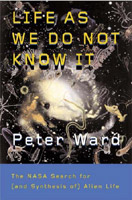 Life as We Do Not Know It, by the University of Washington's Peter Ward, has four purposes, as he explains in the Preface: (1) To update the public about recent progress in astrobiology, (2) To propose a new definition of life in which viruses are alive, (3) To speculate about forms of alien life, and (4) To consider the origin of life in extraterrestrial environments. Life as We Do Not Know It, by the University of Washington's Peter Ward, has four purposes, as he explains in the Preface: (1) To update the public about recent progress in astrobiology, (2) To propose a new definition of life in which viruses are alive, (3) To speculate about forms of alien life, and (4) To consider the origin of life in extraterrestrial environments.
Like almost everyone else, Ward ignores the software aspect of the origin-of-life problem. Nothing new about that. But with all his willingness to consider every imaginable scenario, we wish he were more receptive to stronger versions of panspermia. He admits only the standard two possibilities for the origin-of-life: God or "some chemical pathway" (p xxiv). To us, the complete lack of direct evidence for any origin-of-life, anywhere, ever, suggests a third possibility: life always existed. He writes, "There are many ways for inanimate matter to take on the properties of life" (p 17). Like what? And he is sure that DNA could not persist in amber (p 91), but does he know that bacterial spores 25 to 40 million years old were revived from amber in 1995? And when he says flatly that interstellar panspermia "Just won't happen" (p 151), he ignores comets as possible transfer vehicles. But elsewhere he admits them. Oh well. Having made our few complaints, we are delighted that the book has much to say about panspermia. The listing for panspermia in the index has 11 subtopics with 32 page references. Ward confirms that panspermia is a serious theory. This confirmation outweighs our misgivings and we recommend this book!
 Peter D. Ward, Life as We Do Not Know It: The NASA Search for (and Synthesis of) Alien Life, ISBN 9780143038498, 288 pages, Viking Penguin, 3 Nov 2005. Peter D. Ward, Life as We Do Not Know It: The NASA Search for (and Synthesis of) Alien Life, ISBN 9780143038498, 288 pages, Viking Penguin, 3 Nov 2005.
 Raul J. Cano and Monica K. Borucki, "Revival and Identification of Bacterial Spores in 25- to 40-Million-Year-Old Dominican Amber" [abstract],
p 1060-1064 v 268, Science, 19 May 1995. Raul J. Cano and Monica K. Borucki, "Revival and Identification of Bacterial Spores in 25- to 40-Million-Year-Old Dominican Amber" [abstract],
p 1060-1064 v 268, Science, 19 May 1995.
 Introduction...
and Introduction...
and  What Is Life? are related CA webpages. What Is Life? are related CA webpages.
 The RNA World is the principle CA webpage about the origin-of-life problem. The RNA World is the principle CA webpage about the origin-of-life problem.
 8 December 2005 8 December 2005
Simple sea anemones and coral have many genes thought to be exclusive to higher animals and some plants, according to an international team of molecular biologists and geneticists. The resulting data set ...implies that much of the genetic complexity commonly assumed to have arisen much later in animal evolution is actually ancestral. The most surprising implication of these analyses, however, is that anthozoans have retained a substantial number of genes not previously known in the animal kingdom," they write. Furthermore, Two possibilities remain to explain the presence of these genes in the anthozoan genomes: (i) lateral gene transfer (LGT); or (ii) conservation of ancient genes that have been lost from those animals for which complete sequences are available. Although we cannot rule out LGT in all cases, we favor the latter explanation for most of these matches....
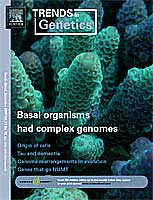 In many respects, the complexity of the anthozoan gene set does not differ substantially from that of vertebrates and frequently exceeds that of the model invertebrates Drosophila and Caenorhabditis. ...One possible interpretation of the counterintuitive genetic complexity of cnidarians could be that they are actually highly derived deuterostomes. However, this interpretation is strongly contradicted by a large body of phylogenetic data, which indicates that cnidarians are a monophyletic group basal within the Eumetazoa and forming the sister group to the Bilateria....
In many respects, the complexity of the anthozoan gene set does not differ substantially from that of vertebrates and frequently exceeds that of the model invertebrates Drosophila and Caenorhabditis. ...One possible interpretation of the counterintuitive genetic complexity of cnidarians could be that they are actually highly derived deuterostomes. However, this interpretation is strongly contradicted by a large body of phylogenetic data, which indicates that cnidarians are a monophyletic group basal within the Eumetazoa and forming the sister group to the Bilateria....
Four general conclusions emerge from this work. First, a link between morphological complexity and gene number is illusory. Second, the common ancestor of cnidarians and 'higher' animals (the Ureumetazoa) was surprisingly complex at the genetic level. Third, a small percentage of genes in the two anthozoans represents preserved ancient genes that were present in the common ancestor but have been lost in the 'higher' animals so far examined. ...Finally, gene loss has had a major role in animal evolution, and has been particularly extensive in the ecdysozoan model organisms. ...The remarkable genetic complexity of anthozoan cnidarians implies that most of the qualitative genetic differences between animals and other eukaryotes are ancestral....
This finding adds to the list of surprises for darwinism coming from genome sequences. Its interpretation under standard darwinism is far from obvious. However, for cosmic ancestry, the presence of complex genes in simple life forms is expected. It supports the contention that the basic genetic programs for higher life forms
1) may reside in species that do not deploy them,
2) may be acquired by gene transfer,
3) may be optimized, but not originally composed, by strictly darwinian evolution, and
4) are as old as life.
 Ulrich Technau et al., "Maintenance of ancestral complexity and non-metazoan genes in two basal cnidarians" [abstract], doi:10.1016/j.tig.2005.09.007, p 633-639 v 21, Trend in Genetics, December 2005. Ulrich Technau et al., "Maintenance of ancestral complexity and non-metazoan genes in two basal cnidarians" [abstract], doi:10.1016/j.tig.2005.09.007, p 633-639 v 21, Trend in Genetics, December 2005.
 The Simple Life Ain't So Simple, by Elizabeth Pennisi, ScienceNOW Daily News, 6 December 2005. The Simple Life Ain't So Simple, by Elizabeth Pennisi, ScienceNOW Daily News, 6 December 2005.
 Simple animals are not so simple after all, by På Høyden, Sars International Centre for Marine Molecular Biology, 24 Nov 2005. Simple animals are not so simple after all, by På Høyden, Sars International Centre for Marine Molecular Biology, 24 Nov 2005.
 Viruses and Other Gene Transfer Mechanisms is a related CA webpage. [Next-What'sNEW about HGT-Prev] Viruses and Other Gene Transfer Mechanisms is a related CA webpage. [Next-What'sNEW about HGT-Prev]
 Metazoan Genes Older Than Metazoa? is a related CA webpage. Metazoan Genes Older Than Metazoa? is a related CA webpage.
 ...Coral contains many sequences matching ones from ...vertebrates is a related What'sNEW article, 22 Dec 2003. ...Coral contains many sequences matching ones from ...vertebrates is a related What'sNEW article, 22 Dec 2003.
 5 December 2005 5 December 2005
Many [microbes] can tolerate a wide range of environments... and they have an astonishing ability to hunker down in harsh environments until their moment arises.
 John Whitfield, "Is Everything Everywhere?" [summary], 10.1126/science.310.5750.960, p 960-961 v 310, Science, 11 Nov 2005. John Whitfield, "Is Everything Everywhere?" [summary], 10.1126/science.310.5750.960, p 960-961 v 310, Science, 11 Nov 2005.
 Bacteria... is a related CA webpage. Bacteria... is a related CA webpage.
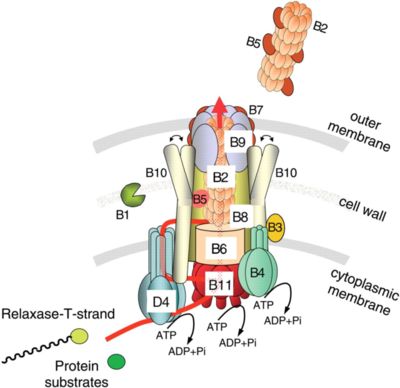
Conjugative DNA transfer through the A. tumefaciens VirB/D4 system |
 2 December 2005 2 December 2005
Transformation and conjugation are two means of gene transfer among bacteria. (Transduction by viruses is another.) Three US scientists have examined these these two processes in detail to see how the DNA actually enters the cell. They write, "The early reactions mediating processing of dsDNA to translocation-competent ssDNA substrates clearly are strikingly different for transformation and conjugation systems. Yet for both systems, the actual process of ssDNA transport across bacterial membranes might be more mechanistically conserved than previously envisioned." We are glad that this subject is being explored.
 Inês Chen, Peter J. Christie and David Dubnau, "The Ins and Outs of DNA Transfer in Bacteria" [abstract], 10.1126/science.1114021, p 1456-1460 v 310, Science, 2 Dec 2005. Inês Chen, Peter J. Christie and David Dubnau, "The Ins and Outs of DNA Transfer in Bacteria" [abstract], 10.1126/science.1114021, p 1456-1460 v 310, Science, 2 Dec 2005.
 Viruses and Other Gene Transfer Mechanisms is a related CA webpage. [Next-What'sNEW about HGT-Prev] Viruses and Other Gene Transfer Mechanisms is a related CA webpage. [Next-What'sNEW about HGT-Prev]
 25 November 2005 25 November 2005
A small marine worm has complex genes like humans'. An international consortium of researchers observed these genes in Platynereis dumerlii, which is similar to marine worms fossilized about 600 million years ago.
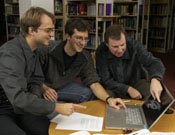 researchers Detlev Arendt, Florian Raible and Peer Bork researchers Detlev Arendt, Florian Raible and Peer Bork |
Among thirty sequenced genes found in many animals, the orthologs in humans contain 8.4 introns per gene, while the orthologs in nematodes and insects contain only 2.4 to 5.4 per gene. From evidence like this biologists have deduced that evolution to higher forms correlates with intron-gain. But in the marine worm, which is even more primitive, the same orthologs have 7.8 introns per gene, this study reveals. More importantly, many of the worm's introns have sequences and positions nearly identical with those of humans'. Florian Raible, who performed most of the computer analyses, says, "The fraction of Platynereis genes we have been able to look at tells a very clear story. The worm's genes are very similar to human genes." In Science his team writes, "We conclude that at least two-thirds of the compared human introns already existed in the urbilaterian ancestor at precisely the same amino acid position and phase." We hope that this study has fully considered the possible effects of gene transfer and intron homing. In any case, the researchers' conclusion supports our contention that the basic genetic programming for higher life is as old as life itself.
 Florian Raible et al., "Vertebrate-Type Intron-Rich Genes in the Marine Annelid Platynereis dumerilii [abstract], 10.1126/science.1119089, p 1325-1326 v 310, Science, 25 Nov 2005. Florian Raible et al., "Vertebrate-Type Intron-Rich Genes in the Marine Annelid Platynereis dumerilii [abstract], 10.1126/science.1119089, p 1325-1326 v 310, Science, 25 Nov 2005.
 Sudhir Kumar and S. Blair Hedges, "Pushing Back the Expansion of Introns in Animal Genomes" [abstract], 10.1016/j.cell.2005.12.007, p 1182-1184 v 123, Cell, 29 Dec 2005. Sudhir Kumar and S. Blair Hedges, "Pushing Back the Expansion of Introns in Animal Genomes" [abstract], 10.1016/j.cell.2005.12.007, p 1182-1184 v 123, Cell, 29 Dec 2005.
 The earliest animals had human-like genes, European Molecular Biology Laboratory Press Release, Heidelberg, 24 Nov 2005. Also posted at ScienceDaily.com. The earliest animals had human-like genes, European Molecular Biology Laboratory Press Release, Heidelberg, 24 Nov 2005. Also posted at ScienceDaily.com.
 Thanks, Jerry Chancellor and EurekAlert! Thanks, Jerry Chancellor and EurekAlert!
 Viruses and Other Gene Transfer Mechanisms is a related CA webpage. [Next-What'sNEW about HGT-Prev] Viruses and Other Gene Transfer Mechanisms is a related CA webpage. [Next-What'sNEW about HGT-Prev]
 Introns... and Introns... and
 Metazoan Genes Older Than Metazoa? are related CA webpages. Metazoan Genes Older Than Metazoa? are related CA webpages.
 Dr. Florian Raible responds to our concerns, 2 Dec 2005. Dr. Florian Raible responds to our concerns, 2 Dec 2005.
 21 November 2005 21 November 2005
Gene transfer, not duplication, has modified bacterial metabolism for the past 100 million years. Biologists from Germany, Hungary and the UK concluded this after comparing the genome of E. coli (pictured) with those of its closest relatives. They write, "Under realistic parameter settings, we estimated that 15-32 genes were transferred horizontally into the E. coli metabolic network since its divergence from the Salmonella lineage, vastly outnumbering the one (1) identified gene duplication over the same period." Besides, the one duplicated one "functions in the same enzymatic reaction" as before. They observe, "Most changes to the metabolic network of Escherichia coli in the past 100 million years are due to horizontal gene transfer, with little contribution from gene duplicates."

 Csaba Pál, Balázs Papp and Martin J. Lercher, "Adaptive evolution of bacterial metabolic networks by horizontal gene transfer" [abstract], doi:10.1038/ng1686, p 1372-1375 v 37, Nature Genetics, online 20 Nov 2005. Csaba Pál, Balázs Papp and Martin J. Lercher, "Adaptive evolution of bacterial metabolic networks by horizontal gene transfer" [abstract], doi:10.1038/ng1686, p 1372-1375 v 37, Nature Genetics, online 20 Nov 2005.
 'Sex' helps bacteria cope with a changing world, The University of Bath, 20 Nov 2005. 'Sex' helps bacteria cope with a changing world, The University of Bath, 20 Nov 2005.
 Viruses and Other Gene Transfer Mechanisms is a related CA webpage. [Next-What'sNEW about HGT-Prev] Viruses and Other Gene Transfer Mechanisms is a related CA webpage. [Next-What'sNEW about HGT-Prev]
 Thanks, Jerry Chancellor, Andrew McLaughlin and EurekAlert! Thanks, Jerry Chancellor, Andrew McLaughlin and EurekAlert!
 17 November 2005 17 November 2005
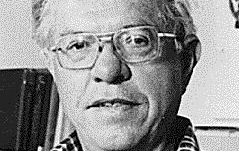 Sir Fred Hoyle is remembered on Australian radio, with Robyn Williams interviewing biographer Simon Mitton and astronomer Martin Rees. The show also features a passage from Hoyle's The Black Cloud, read by Arthur Dignam, and Sir Fred's own words recorded in interviews with Williams as early as 1978.
Sir Fred Hoyle is remembered on Australian radio, with Robyn Williams interviewing biographer Simon Mitton and astronomer Martin Rees. The show also features a passage from Hoyle's The Black Cloud, read by Arthur Dignam, and Sir Fred's own words recorded in interviews with Williams as early as 1978.
 A Tribute to Sir Fred Hoyle, transcript of radio show with Robyn Wiliams, Radio National, 29 Oct 2005. A Tribute to Sir Fred Hoyle, transcript of radio show with Robyn Wiliams, Radio National, 29 Oct 2005.
 Obituaries: Fred Hoyle, by Martin Rees, v 54 n 11, Physics Today (photo source), Nov 2001. Obituaries: Fred Hoyle, by Martin Rees, v 54 n 11, Physics Today (photo source), Nov 2001.
 Fred Hoyle... is a related CA webpage. Fred Hoyle... is a related CA webpage.
 Thanks, Larry Klaes. Thanks, Larry Klaes.
 15 November 2005 15 November 2005
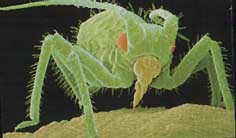 A plant virus can easily change insect vectors, geneticists in France and Spain have learned. In nature, 80% of plant viruses are transmitted by a vectors. The vector for Cauliflower mosaic virus is a single species of aphid (pictured). Such "extremely specific virus-vector recognition," depends on a viral protein that binds to the aphid's mouth parts. The European geneticists found that altering a single amino acid residue in this protein can cause the virus to switch to a different vector species. "We demonstrate that change of a virus to a different vector species requires only a single mutation and can occur rapidly and spontaneously," they write. This news reveals unsuspected versatility in viruses' capability to transfer genes among plants.
A plant virus can easily change insect vectors, geneticists in France and Spain have learned. In nature, 80% of plant viruses are transmitted by a vectors. The vector for Cauliflower mosaic virus is a single species of aphid (pictured). Such "extremely specific virus-vector recognition," depends on a viral protein that binds to the aphid's mouth parts. The European geneticists found that altering a single amino acid residue in this protein can cause the virus to switch to a different vector species. "We demonstrate that change of a virus to a different vector species requires only a single mutation and can occur rapidly and spontaneously," they write. This news reveals unsuspected versatility in viruses' capability to transfer genes among plants.
 Aranzazu Moreno et al., "A Single Amino Acid Position in the Helper Component of Cauliflower Mosaic Virus Can Change the Spectrum of Transmitting Vector Species" [abstract], p 13587-13593 v 79, Journal of Virology, Nov 2005. Aranzazu Moreno et al., "A Single Amino Acid Position in the Helper Component of Cauliflower Mosaic Virus Can Change the Spectrum of Transmitting Vector Species" [abstract], p 13587-13593 v 79, Journal of Virology, Nov 2005.
 "Virology: Mouthing Off" [commentary], p 4 v 438, Nature, 3 Nov 2005. "Virology: Mouthing Off" [commentary], p 4 v 438, Nature, 3 Nov 2005.
 Viruses and Other Gene Transfer Mechanisms is a related CA webpage. [Next-What'sNEW about HGT-Prev] Viruses and Other Gene Transfer Mechanisms is a related CA webpage. [Next-What'sNEW about HGT-Prev]
 15 November 2005 15 November 2005
Photosynthesis genes in marine viruses participate in host metabolism, according to geneticists in Boston and Hawaii. Genes for photosynthesis have previously been observed in viruses, and there is evidence that photosynthesis "evolved by gene transfer." Now the story has a new wrinkle. Apparently, viral photosynthesis genes can function within a host without becoming incorporated into its genome.
 Debbie Lindell et al., "Photosynthesis genes in marine viruses yield proteins during host infection" [abstract], p 86-89 v 438, Nature, 3 Nov 2005. Debbie Lindell et al., "Photosynthesis genes in marine viruses yield proteins during host infection" [abstract], p 86-89 v 438, Nature, 3 Nov 2005.
 Photosynthesis evolved by gene transfer is a related What'sNEW article, 24 Nov 2002. Also, search for "photosynthesis" on the "Viruses..." webpage: Photosynthesis evolved by gene transfer is a related What'sNEW article, 24 Nov 2002. Also, search for "photosynthesis" on the "Viruses..." webpage:
 Viruses and Other Gene Transfer Mechanisms is a related CA webpage. [Next-What'sNEW about HGT-Prev] Viruses and Other Gene Transfer Mechanisms is a related CA webpage. [Next-What'sNEW about HGT-Prev]
 Photosynthetic bacteria may be able to live without solar light — a possibly related reply from Larry Klaes, 22 Nov 2005. Photosynthetic bacteria may be able to live without solar light — a possibly related reply from Larry Klaes, 22 Nov 2005.
 9 November 2005 9 November 2005
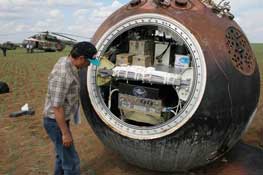 Lichens survive in space aboard ESA's Foton M-2 mission launched into low-Earth orbit by a Russian Soyuz rocket, 31 May. After reaching orbit, the Biopan facility containing the lichens opened to expose them to the vacuum, radiation and wide temperature fluctuations of space for 14.6 days. It closed again for reentry and landing by parachute. The samples were examined at the ESA research facility in Noordwijk, the Netherlands. The survival rate exceeded 90% and photosynthesis was not impaired, according to the scientist in charge of the experiment, Leopoldo García Sancho of the Complutense University of Madrid. The results "would support the theory of panspermia," he said.
Lichens survive in space aboard ESA's Foton M-2 mission launched into low-Earth orbit by a Russian Soyuz rocket, 31 May. After reaching orbit, the Biopan facility containing the lichens opened to expose them to the vacuum, radiation and wide temperature fluctuations of space for 14.6 days. It closed again for reentry and landing by parachute. The samples were examined at the ESA research facility in Noordwijk, the Netherlands. The survival rate exceeded 90% and photosynthesis was not impaired, according to the scientist in charge of the experiment, Leopoldo García Sancho of the Complutense University of Madrid. The results "would support the theory of panspermia," he said.
 Lichen Survives In Space, SpaceDaily, 9 Nov 2005. Lichen Survives In Space, SpaceDaily, 9 Nov 2005.
 Líquenes que sobreviven dos semanas en el espacio abierto, El País, Madrid, 29 Jun 2005. Líquenes que sobreviven dos semanas en el espacio abierto, El País, Madrid, 29 Jun 2005.
 Introduction... is a related CA webpage. Introduction... is a related CA webpage.
 Bacteria... is a CA webpage about the space-hardiness of prokaryotic life. Bacteria... is a CA webpage about the space-hardiness of prokaryotic life.
 Thanks, Jim Galasyn and Mike Peabody. Thanks, Jim Galasyn and Mike Peabody.
 8 November 2005 8 November 2005
The Scientific Legacy of Fred Hoyle contains chapters by thirteen of Hoyle's former collaborators, including Hermann Bondi, John D. Barrow, Geoffrey and E. Margaret Burbidge, and, the ones we know best, Jayant Narlikar and Chandra Wickramasinghe.
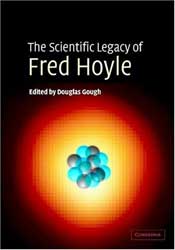
Narlikar's chapter, illustrated by his wife Mangala, cites many examples in which Hoyle was ahead of the field in cosmology. When Hoyle's ideas were ultimately adopted and publicized by others, he often went uncredited. And Narlikar confirms, The standard model in cosmology is nowhere near as secure and laboratory-tested as the standard model in physics.
Wickramasinghe gives an overview of his collaboration with Hoyle concerning the content of interstellar dust, and he resumes their probabilistic critique of the darwinian account of new proteins. Chandra is aware that proteins can remain functional despite numerous amino acid substitutions. In fact, some hypervariable proteins can remain functional even if only 8% of the amino acids remain unchanged. Does this freedom mean that darwinian natural seletion might find at least those ones? Following Chandra's method (p 84-87), we see that the answer is still no. Consider a protein of 300 amino acids, of which only 25 are fixed. Assume that the remaining 275 may differ without harm as long as they remain either hydrophobic or hydrophilic. Assume that life's twenty amino acids are equally divided into these two categories, meaning that any of ten residues could occupy each of the 275 variable positions. Under these relaxed, over-simplified constraints, the theoretical number of functional sequences of this protein would be 10^275. Sounds like a lot! Meanwhile, the theoretical number of all possible proteins of this size is 20^300, or about 10^390. Within that confined sequence space, what is the chance of selecting any functional example of this protein in one trial? It is about 10^(275-390), or 10^-115. In other words, no plausible number of trials makes success likely, even for proteins as hypervariable as this one.
 04 May 2016: 04 May 2016:  references. At any given site, only a small number of amino acids are actually permissible. references. At any given site, only a small number of amino acids are actually permissible.
To rescue the mainstream account of new proteins, darwinists make additional untested assumptions, like, 1) there are functional stepwise pathways through sequence space connecting all the proteins in life, and 2) these pathways are easily found and followed often enough during evolution. To scrutinize this theory, we need more sceptics like Fred Hoyle!
 Douglas Gough, ed., The Scientific Legacy of Fred Hoyle [promo], 266 pages, ISBN-10: 0521824486, Cambridge University Press, 17 Mar 2005. Douglas Gough, ed., The Scientific Legacy of Fred Hoyle [promo], 266 pages, ISBN-10: 0521824486, Cambridge University Press, 17 Mar 2005.
 Fred Hoyle... is a related CA webpage. Fred Hoyle... is a related CA webpage.
 Thanks, P.D. Moncrief. Thanks, P.D. Moncrief.
 4 November 2005 4 November 2005
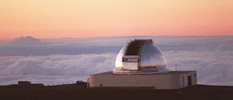 Methane on Mars probably does not come from volcanoes. Vladimir Krasnopolsky of Catholic University of America in Washington DC reached this conclusion after studying Mars' atmosphere with the infrared spectrometer at the NASA Infrared Telescope Facility in Hawaii. As they do on Earth, any volcanoes on Mars should release easily detectable sulfur dioxide into the atmosphere. None was detected. Without volcanoes, it's hard to dismiss a biological source for Mars' methane.
Methane on Mars probably does not come from volcanoes. Vladimir Krasnopolsky of Catholic University of America in Washington DC reached this conclusion after studying Mars' atmosphere with the infrared spectrometer at the NASA Infrared Telescope Facility in Hawaii. As they do on Earth, any volcanoes on Mars should release easily detectable sulfur dioxide into the atmosphere. None was detected. Without volcanoes, it's hard to dismiss a biological source for Mars' methane.
 Vladimir A. Krasnopolsky, "A sensitive search for SO2 in the martian atmosphere: Implications for seepage and origin of methane," p 487-492 v 178, Icarus, 15 Nov (online 1 Jul) 2005. Vladimir A. Krasnopolsky, "A sensitive search for SO2 in the martian atmosphere: Implications for seepage and origin of methane," p 487-492 v 178, Icarus, 15 Nov (online 1 Jul) 2005.
 Volcanoes ruled out for Martian methane, by Jeff Hecht, NewScientist.com, 4 November 2005. Volcanoes ruled out for Martian methane, by Jeff Hecht, NewScientist.com, 4 November 2005.
 Methane on Mars, posted 29 Dec 2004, links to Krasnopolsky et al. on that subject in Icarus. Methane on Mars, posted 29 Dec 2004, links to Krasnopolsky et al. on that subject in Icarus.
 Life on Mars! is a related CA webpage with a dozen or so items about Mars' methane under What'sNEW there. Life on Mars! is a related CA webpage with a dozen or so items about Mars' methane under What'sNEW there.
 Thanks, Jerry Chancellor. Thanks, Jerry Chancellor.
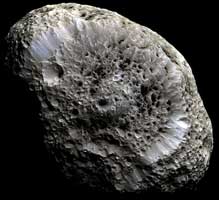
 4 November 2005 4 November 2005
Hyperion's craters look like vents to us. The Cassini robotic spacecraft photographed this moon of Saturn on 26 September. It is about 250 kilometers across and has a "density so low that it might house a vast system of caverns inside."
 Saturn's Hyperion: A Moon with Odd Craters, Astronomy Picture of the Day, 3 Oct 2005. Saturn's Hyperion: A Moon with Odd Craters, Astronomy Picture of the Day, 3 Oct 2005.
 Comets... is a related CA webpage about bodies that exhibit venting. Comets... is a related CA webpage about bodies that exhibit venting.
 Life on Europa or Other Moons? has links about a variety of moons in the solar system. Life on Europa or Other Moons? has links about a variety of moons in the solar system.
 31 October 2005 31 October 2005
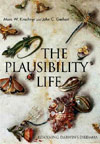 The origin of novelty, the development of new arrangements of interlocking parts that some call "irreducibly complex," can only be understood in the light of the last 20 years of research in cell biology and development — Harvard Medical School. In other words, until recently, darwinists were claiming to understand something that they couldn't possibly have understood?!
The origin of novelty, the development of new arrangements of interlocking parts that some call "irreducibly complex," can only be understood in the light of the last 20 years of research in cell biology and development — Harvard Medical School. In other words, until recently, darwinists were claiming to understand something that they couldn't possibly have understood?!
 Book Explains How Evolution Really Works, Rebuts Intelligent Design — promotion for The Plausibility of Life from Harvard Medical School, posted on Newswise, 27 Oct 2005. Book Explains How Evolution Really Works, Rebuts Intelligent Design — promotion for The Plausibility of Life from Harvard Medical School, posted on Newswise, 27 Oct 2005.
 Marc W. Kirschner and John C. Gerhart, The Plausibility of Life: Resolving Darwin's Dilemma, Yale University Press, 2005. Marc W. Kirschner and John C. Gerhart, The Plausibility of Life: Resolving Darwin's Dilemma, Yale University Press, 2005.
 Brian Charlesworth, "On the Origins of Novelty and Variation" [summary], p 1619-1620 v 310, Science, 9 Dec 2005. Brian Charlesworth, "On the Origins of Novelty and Variation" [summary], p 1619-1620 v 310, Science, 9 Dec 2005.
 Neo-Darwinism... is a related CA webpage. Neo-Darwinism... is a related CA webpage.
 28 October 2005 28 October 2005
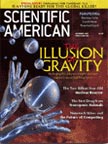 Panspermia is reconsidered in America's most respected popular science magazine. Developments over the past decade ...have given new credibility to the idea that Earth's biosphere could have arisen from an extraterrestrial seed. The paradigm is clearly shifting.
Panspermia is reconsidered in America's most respected popular science magazine. Developments over the past decade ...have given new credibility to the idea that Earth's biosphere could have arisen from an extraterrestrial seed. The paradigm is clearly shifting.
 David Warmflash and Benjamin Weiss, "Did Life Come from Another World? New research indicates that microorganisms could have survived a journey from Mars to Earth", Scientific American, Nov 2005. David Warmflash and Benjamin Weiss, "Did Life Come from Another World? New research indicates that microorganisms could have survived a journey from Mars to Earth", Scientific American, Nov 2005.
 Introduction: More Than Panspermia is a related CA webpage. Introduction: More Than Panspermia is a related CA webpage.
 Kenneth B. Miller replies with a question, 14 Nov 2005. Kenneth B. Miller replies with a question, 14 Nov 2005.
 Thanks, Stan Franklin. Thanks, Stan Franklin.
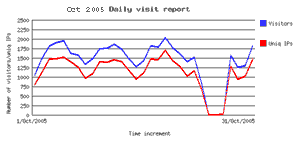
 28 October 2005 28 October 2005
Hurricane Wilma knocked out CA's web host in Florida on 23 October. Our website and email service were down until now. We're sorry!
 Most of South Florida without power, by Tony Bertuca and Wendy Koch, USA Today, 26 Oct 2005. Most of South Florida without power, by Tony Bertuca and Wendy Koch, USA Today, 26 Oct 2005.
 About This Webite is a related CA webpage. About This Webite is a related CA webpage.
 Advances.Com Hosting Service Advisory: our web host says outages will not recur, 6 Nov 2005. Advances.Com Hosting Service Advisory: our web host says outages will not recur, 6 Nov 2005.
 19 October 2005 19 October 2005
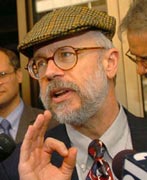 Michael Behe testified in favor of Intelligent Design (ID) Monday, in a lawsuit about the science curriculum of public high schools in Dover, Pennsylvania. If natural selection alone can produce bacterial flagella, closed-system experiments should be able to demonstrate that capability, Behe suggested. A negative outcome would favor ID, he says. But we wonder, if ID can't influence the proposed experiments, how does it influence evolution in nature? We think a negative outcome would favor cosmic ancestry over both darwinism and ID.
Michael Behe testified in favor of Intelligent Design (ID) Monday, in a lawsuit about the science curriculum of public high schools in Dover, Pennsylvania. If natural selection alone can produce bacterial flagella, closed-system experiments should be able to demonstrate that capability, Behe suggested. A negative outcome would favor ID, he says. But we wonder, if ID can't influence the proposed experiments, how does it influence evolution in nature? We think a negative outcome would favor cosmic ancestry over both darwinism and ID.
 Defense Begins Case in Evolution Trial, ScienceNow, 18 Oct 2005. Defense Begins Case in Evolution Trial, ScienceNow, 18 Oct 2005.
 Witness Defends Broad Definition of Science, by Laurie Goodstein, The New York Times, 19 Oct 2005. The mechanism is "intelligent activity". Witness Defends Broad Definition of Science, by Laurie Goodstein, The New York Times, 19 Oct 2005. The mechanism is "intelligent activity".
 Kitzmiller et al. v. Dover Area School District: Legal documents, trial materials, updates, posted by National Center for Science Education. Kitzmiller et al. v. Dover Area School District: Legal documents, trial materials, updates, posted by National Center for Science Education.
 Evolution vs Creationism is a related CA webpage. Evolution vs Creationism is a related CA webpage.
 Is Sustained Macroevolutionary Progress Possible? discusses the need for closed-system experiments. Is Sustained Macroevolutionary Progress Possible? discusses the need for closed-system experiments.
 Comparing Darwinism, Creationism/ID and Cosmic Ancestry is a related local webpage. Comparing Darwinism, Creationism/ID and Cosmic Ancestry is a related local webpage.
 Correspondence with Michael Behe, 12-25 Jun 2013. Correspondence with Michael Behe, 12-25 Jun 2013. 

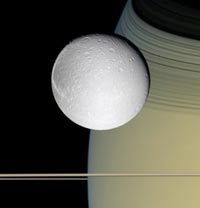 18 October 2005
18 October 2005
Dione, another icy moon of Saturn, made a striking picture as Cassini approached it last week, while the razor-thin rings cast striped shadows on the planet's limb. Denser than Tethys, "it is probably composed of a rocky core making up one-third of the moon's mass, and the rest is composed of water ice." Apparently, Dione is one more repository of water in the solar system.
 Ringside view of Dione, European Space Agency, 18 Oct 2005. Ringside view of Dione, European Space Agency, 18 Oct 2005.
 4,500 Kilometers Above Dione, Astronomy Picture of the Day, 26 Oct 2005. 4,500 Kilometers Above Dione, Astronomy Picture of the Day, 26 Oct 2005.
 Life on Europa or Other Moons? has links about other similar bodies. Life on Europa or Other Moons? has links about other similar bodies.
 Thanks, Larry Klaes. Thanks, Larry Klaes.
 17 October 2005 17 October 2005
The principal process by which new gene functions arise is by making use of preexisting genes.
 Roy J. Britten, "The majority of human genes have regions repeated in other human genes" [abstract], p 5466-5470 v 102, Proc. Natl. Acad. Sci. USA, 12 Apr (online 31 Mar) 2005. Roy J. Britten, "The majority of human genes have regions repeated in other human genes" [abstract], p 5466-5470 v 102, Proc. Natl. Acad. Sci. USA, 12 Apr (online 31 Mar) 2005.
 Viruses and Other Gene Transfer Mechanisms is a related CA webpage. [Next-What'sNEW about HGT-Prev] Viruses and Other Gene Transfer Mechanisms is a related CA webpage. [Next-What'sNEW about HGT-Prev]
 Human Genome Search... is a related CA webpage. Human Genome Search... is a related CA webpage.

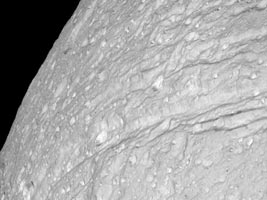 12 October 2005
12 October 2005
Tethys was photographed by Cassini last month from closer than ever before. Slightly more than 1,000 kilometers in diameter, it is the fourth largest moon of Saturn. With overall density very close to that of water, "Tethys is thought to have been predominantly liquid sometime in its distant past." For life-as-we-know-it to flourish, the only invariable requirement is liquid water. Evidence of its presence elsewhere is becoming hard to ignore.
 Cratered Cliffs of Ice on Saturn's Tethys, Astronomy Picture of the Day, 12 Oct 2005. Cratered Cliffs of Ice on Saturn's Tethys, Astronomy Picture of the Day, 12 Oct 2005.
 Life on Europa or Other Moons? has links about other similar bodies. Life on Europa or Other Moons? has links about other similar bodies.
 11 October 2005 11 October 2005
Organic chemicals that play a crucial role in the chemistry of life are common in space. This is NASA's comment on a careful re-analysis of the emission spectrum of interstellar dust undertaken after new observations revealed an unexplained peak at 6.2μm. The previous model had relied on polycyclic aromatic hydrocarbons (PAHs) of 30 or more carbon atoms, but it cannot match the more accurately seen spectrum. Now Hudgins, Bauschlicher and Allamandola at Ames Research Center have found that if nitrogen is substituted for a certain few of the carbon atoms in the larger molecules, the newly observed peak is explained. They call these compounds polycyclic aromatic nitrogen heterocycles (PANHs). If these chemists are correct, fully 1-2% of cosmic nitrogen is contained in these interstellar organic particles.
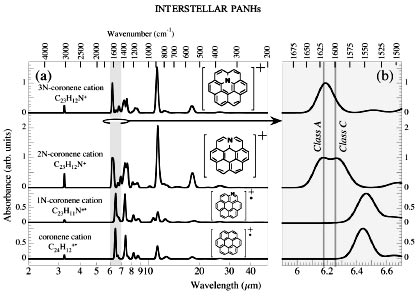 Not too long ago, it was thought space was barren of complex organics because interstellar radiation is too harsh, the distances too great, and violent shocks too frequent to support complex chemistry, let alone survival of large molecules.... Now, however, the observations are undisputed and the previous objections have been forgotten. Complex organic molecules ...are found in every nook and cranny of our galaxy and in most other galaxies as well. NASA is touting them as potential starter ingredients for life on Earth. We think they may actually be post-biotic compounds, but we welcome this significant paradigm shift.
Not too long ago, it was thought space was barren of complex organics because interstellar radiation is too harsh, the distances too great, and violent shocks too frequent to support complex chemistry, let alone survival of large molecules.... Now, however, the observations are undisputed and the previous objections have been forgotten. Complex organic molecules ...are found in every nook and cranny of our galaxy and in most other galaxies as well. NASA is touting them as potential starter ingredients for life on Earth. We think they may actually be post-biotic compounds, but we welcome this significant paradigm shift.
 Douglas M. Hudgins, Charles W. Bauschlicher, Jr. and L. J. Allamandola, "Variations in the Peak Position of the 6.2μm Interstellar Emission Feature: a Tracer of N in the Interstellar Polycyclic Aromatic Hydrocarbon Population" [pdf], p 316-332 v 632, The Astrophysical Journal, 10 Oct 2005. Douglas M. Hudgins, Charles W. Bauschlicher, Jr. and L. J. Allamandola, "Variations in the Peak Position of the 6.2μm Interstellar Emission Feature: a Tracer of N in the Interstellar Polycyclic Aromatic Hydrocarbon Population" [pdf], p 316-332 v 632, The Astrophysical Journal, 10 Oct 2005.
 NASA Discovers Life's Building Blocks Are Common In Space, NASA Newsrelease 05-342, 11 Oct 2005. NASA Discovers Life's Building Blocks Are Common In Space, NASA Newsrelease 05-342, 11 Oct 2005.
 Scientists find clues that the path leading to the Origin of Life begins in Deep Space, NASA Ames, 11 Oct 2005. Scientists find clues that the path leading to the Origin of Life begins in Deep Space, NASA Ames, 11 Oct 2005.
 Life's Building Blocks 'Abundant in Space', by Bjorn Carey, Space.com, 18 Oct 2005. Life's Building Blocks 'Abundant in Space', by Bjorn Carey, Space.com, 18 Oct 2005.
 Hoyle and Wickramasinghe's Analysis of Interstellar Dust is a related CA webpage. Hoyle and Wickramasinghe's Analysis of Interstellar Dust is a related CA webpage.
 3 October 2005 3 October 2005
More about Deep Impact comes from an interview with Jessica Sunshine, the team member responsible for the infrared spectrometer on the NASA mission that struck comet Tempel 1 on July 4th.
 Sunshine on Comets, Part 1, Astrobiology Magazine, 3 Oct 2005. Part 2, 6 Oct 2005. (The links have died.) Sunshine on Comets, Part 1, Astrobiology Magazine, 3 Oct 2005. Part 2, 6 Oct 2005. (The links have died.)
 Deep inside comet Tempel 1 there are lots of organic compounds, What'sNEW, 8 September 2005. Deep inside comet Tempel 1 there are lots of organic compounds, What'sNEW, 8 September 2005.
 Comets... is a related CA webpage. Comets... is a related CA webpage.
 Can The Theory Be Tested? has a related section, Comet Rendezvous. Can The Theory Be Tested? has a related section, Comet Rendezvous.
|